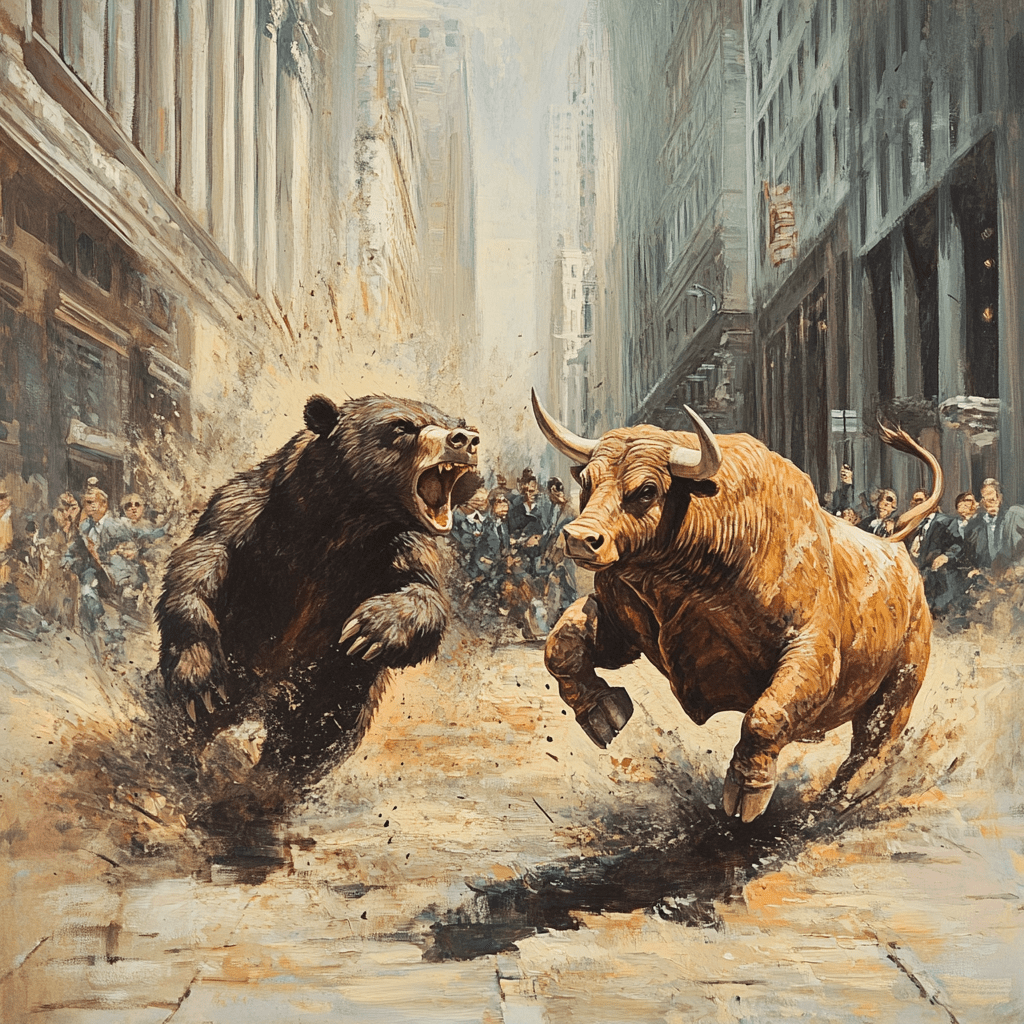Happy Monday, traders…
Jeff here.
You need to hear this…
Traders who think the market will always go up (perma-bulls) or always down (perma-bears) will eventually get humbled.

Sure, these approaches can be successful for a while…
For instance, if you were a perma-bull from 2020 to 2024, you could’ve made a fortune.
But no trend lasts forever…
Bulls who didn’t adapt got hit hard when the market tanked in 2022 (the same thing has happened over the past three weeks).
On the flip side, bears who didn’t cash in during the market drop in 2022 got a rude awakening when the market blasted off in 2023.
The lesson here is simple: Being constantly bullish or bearish sets you up for failure.
This is especially important to consider in this crazy whipsaw market.
You need to be adaptable, nimble, and flexible. Don’t get attached to one outlook.
Let me show you four reasons why perma-opinions are a recipe for disaster…
The Market is Always Changing
The main reason why perma-bears and perma-bulls lose is that the market is constantly shifting.
However, long stretches where stocks are primarily bullish or bearish can lull traders into a daze of complacency.
Sound familiar? Over the past two years, traders have been conditioned to stay long and buy every dip.
But recently, that paradigm flipped…
Three weeks ago, the market started a brutal reversal, leading to many of these perma-bulls getting absolutely destroyed.
This is why you shouldn’t have a purely bullish or bearish positioning on the market…
Simple logic tells us that this can’t be a winning trading strategy in the long term. Don’t be stubborn or inflexible.
Rather, learn multiple setups to help you trade through any market…
Adjust Your Strategy Accordingly
Adapting your strategy is crucial to market survival, which is a major reason why perma-bulls and perma-bears tend to lose out in the end.
When a setup stops working, you need to have another reliable pattern ready to go.
For example:
- If I’m looking to make a quick overnight trade based on Wall Street inefficiencies, I’ll use Burn Notices…
- If I’m looking to put on a market-neutral position, I’ll use The Money Link — matching a long position with a short one in two stocks with a high correlation.
- And if I’m looking to exploit algorithmic glitches in the options market, I’ll use The 24-Hour Glitch system.
I approach every trading day with an open mind, ready to employ any of these strategies, because…
Making Money > Being Right
Some traders get way too focused on making correct market calls when they should be directing their energy toward improving their performance.
Making money is more important than being correct, end of story. Profits over prophecy.
These may sound like the same things, but trust me, they aren’t.
On the one hand: Great traders are willing to go against their initial conviction when the market shows them their idea is incorrect.
On the other hand: Bad traders will stubbornly stick to their predictions, even as their positions are losing money.
This is why, as options traders, we shouldn’t worry about how often we’re right or wrong.
What matters is how much money you make when you are right.
This is because of the asymmetrical risk/reward relationship when trading options.
You could make dozens (even hundreds) of small losing trades in a row, only for one incredible winner to make up for all the losses (and then some).
Stop caring so much about being right and start focusing on making winning trades, regardless of whether they fit into your general viewpoint or not.
Learn to Play Both Sides of the Chart
Newbie traders often have blinders on, only looking to trade calls or puts, failing to see the opportunities on the other side of the options chain.
But these inherent biases will do you a major disservice as a trader. You’ll only consider half of the possible setups on a chart.
If you can time the rally by buying calls early and selling them into strength, then follow through by buying puts near a blow-off top — that’s a nearly perfect trade.
And the inverse play can be just as profitable…
If you can buy puts near the top of a run, and then profit off of a bounce at a near-term bottom, you can make huge profits.
Additionally, being one-sided in your trading can be extremely limiting during specific market cycles (like this one).
If you usually only trade calls, and then, the market starts tanking … what’s your move?
Conversely, if you’re a perma-bear in a rip-roaring bull market, it’s gonna be difficult to find enough quality short setups to pay the bills.
All this to say, if one side of the chart doesn’t work out — don’t close your mind off to potentially trading the opposite.
Perma-bears and perma-bulls will eventually lose. Don’t find yourself in either category.
Be flexible, nimble, and willing to admit when your initial idea was incorrect.
By taking these steps, you’ll be miles ahead of the stubborn options traders who never adjust their market outlook.
Happy trading,
Jeff Zananiri
P.S. Wall Street is asleep at the wheel … and it’s time for us to take advantage.
Institutional algorithms and trading systems are making fatal mistakes EVERY SINGLE DAY, leading to outrageous mispricing…
If you can spot these glitches in real-time, you could enter these “artificially cheap” trades right after they crash — and before they skyrocket — for gains of 51%, 107%, and even 630% … in less than 24 hours.*
On Thursday, August 15th, at 8 PM Eastern, I’m sitting down with legendary millionaire, mentor, and trader Tim Sykes to reveal Wall Street’s dirty little secret — The 24-Hour Glitch.
So, if you want an inside look at the AI-powered system that’s turned Wall Street’s biggest weakness into my greatest strength…
Click here now to reserve your seat!
*Past performance does not indicate future results




